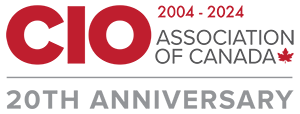CIOs and business leaders everywhere are dealing with a pervasive and destructive “productivity drain.” And even if you’ve never used the term “productivity drain,” you’ll recognize the symptoms. A lack of operational efficiency, low worker productivity, difficulty with enterprise growth and scalability—these are all indicators of dysfunction on an operational level.
The productivity drain is representative of the many employee hours lost to fundamental workflow inefficiencies—particularly those employee hours lost to mundane, manually driven tasks. In fact, a recent study revealed that managers spend an average of 15 hours a week on administrative tasks, preventing them from doing the strategic work that will move the business forward.
The magnitude of this administrative overhead is astounding. To put this in perspective, losing nearly two days per week equates to losing 4 million hours a year for a large corporation with 5,000 managers. This means that $575 billion a year is spent on mundane administrative tasks in the US—or 3.3% of GDP.
So, what’s behind the productivity drain? A few things—inefficient legacy tools (or, in some cases, no tools at all), a heavy reliance on manual processes, and a lack of insight into data leading to non-existent performance management, for starters. And we can only change the way people work by giving them the support and tools they need to work differently.
The most logical way to get everyone on the same platform for work collaboration is to extend an IT Service Management (ITSM) model out to every corner of the enterprise. The ITSM model has a long and successful history of transforming complex systems into digestible services, making it the natural blueprint for building workflow structures that support every department in the organization.
By extending the ITSM model, the entire enterprise can tap into a single system of engagement powered by a single enterprise cloud platform. This allows any department—not just IT—to deliver highly accessible services through one or more support methods, including direct requests, self-service catalogs, a pre-populated knowledge base, and collaboration tools.
At the CIO Peer Forum 2016 ServiceNow Senior Manager, Solution Consulting Rodney Rock will present a session entitled The New CIO Imperative: Recapturing Lost Productivity by Changing the Way People Work, Rock will explore how the productivity drain negatively affects both businesses and their employees, and how IT executives are best positioned to recapture these lost hours by applying IT Service Management across the entire enterprise.
You’ll learn best practices on how to implement a single system of engagement to route work throughout the enterprise, creating a workflow that keeps everyone is in the know, requestors and providers alike. And because requests and work are tracked in a single cloud platform, performance information can be accessed with a click. Work productivity can be analyzed to identify trends and opportunities for improvement, and that data can be used to prioritize resources and drive down costs.
At the end of the day, a single system of engagement provides the entire organization with full visibility, a single source of truth, and a better way to work. It effectively puts an end to the productivity drain.

